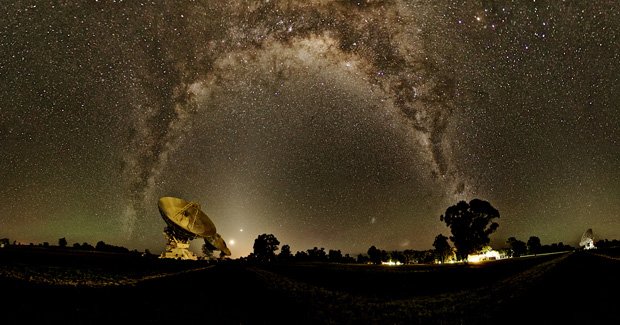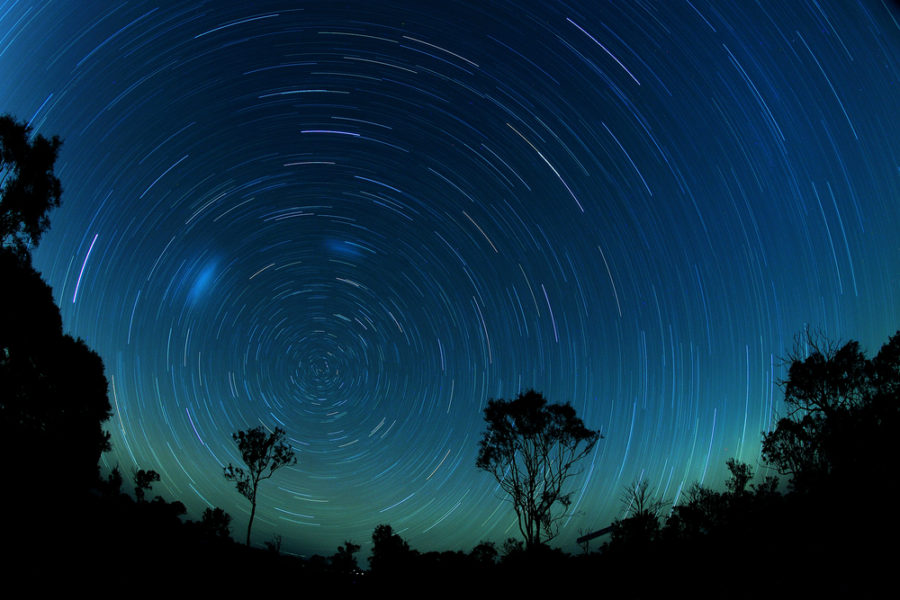Back in September 1969 in a laboratory in north-eastern England, a young, newly minted physics graduate was engaged in a job that no more than a dozen people worldwide would be doing. It was a humble task – fabricating a circular polyethylene air-bag 3.9m in diameter and no more than a couple of centimetres thick. What made the job unique was the purpose of this unwieldy plastic pouch. Once pressurised, it would cushion a 16-tonne disc of an exotic glass-ceramic material known as Cer-Vit while it was ground and polished during many months to form the precisely dished mirror of a giant telescope.
That starstruck youngster was me and this was my first encounter with the Anglo-Australian Telescope – the AAT – on which construction was just beginning in the venerable telescope-building works of Sir Howard Grubb, Parsons & Company at Newcastle upon Tyne, England. I could hardly have guessed that by the 1990s I’d be managing the same telescope’s scientific output as its Astronomer-in-Charge, and that in far-distant 2024 I’d be helping celebrate half a century of ground-breaking AAT discovery as the Australian Government’s Astronomer-at-Large.
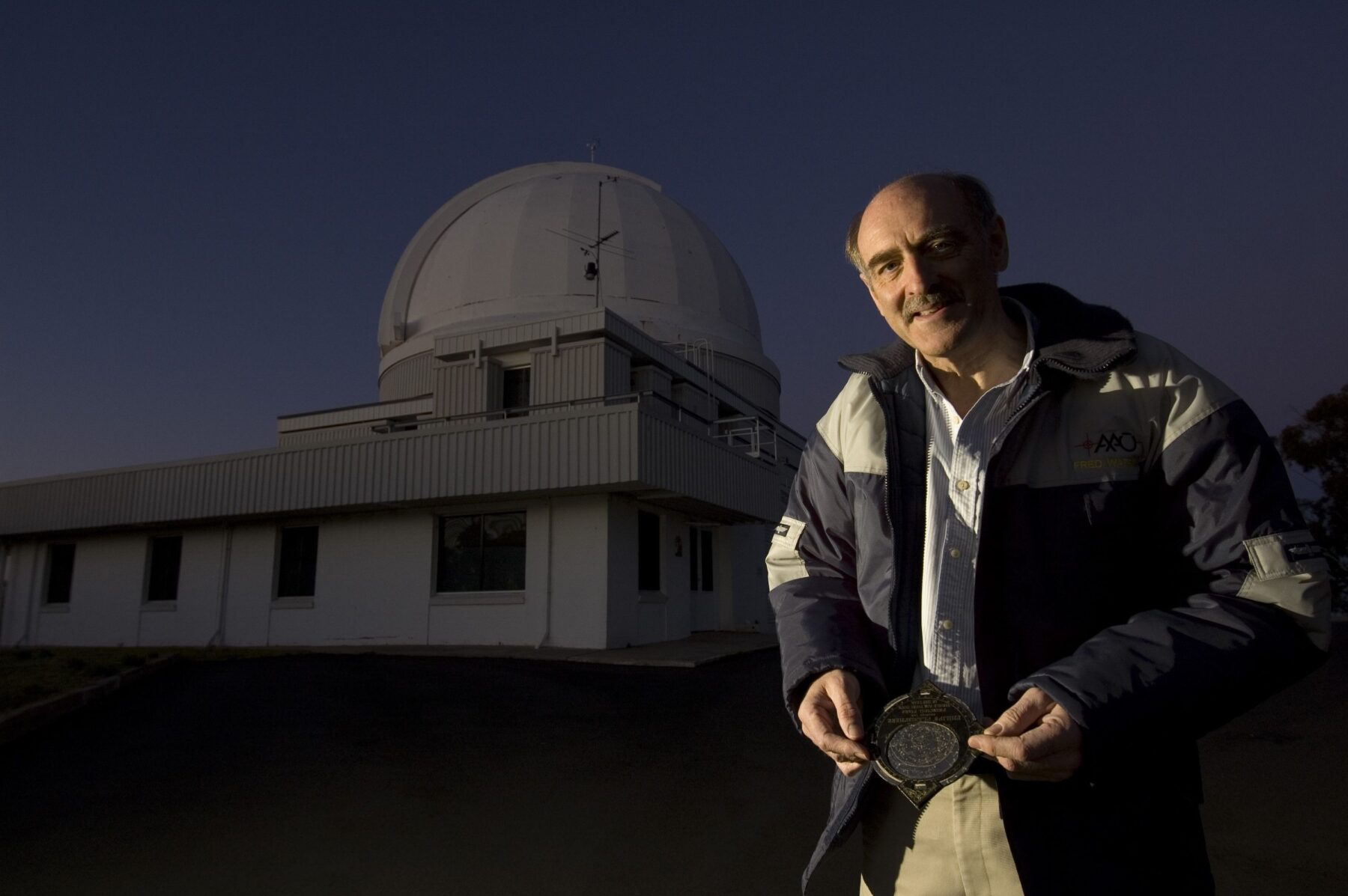

At radioastronomy’s birth
The genesis of the AAT goes back much further than 1969. In the late 1950s the new science of radioastronomy was experiencing significant infrastructure investment in both the UK and Australia – think observatories in Jodrell Bank, England, and Parkes, New South Wales. It was Richard Woolley, then at Mount Stromlo Observatory in Canberra and subsequently Britain’s 11th Astronomer Royal, who floated the idea of a large, jointly funded visible-light telescope in the Southern Hemisphere to allow optical astronomers in both countries to keep up with their radio colleagues.

The project eventually got the go-ahead from the two governments in June 1967, and construction began, not only in Newcastle but also at the Mitsubishi Electric Corporation in Japan, where the telescope’s mounting and control systems were to be built. Preparations also commenced at Siding Spring, a mountaintop near Coonabarabran in Gamilaraay Country in north-western NSW, where the new telescope was to be located.
Significant milestones in the AAT’s early history included the formation of a binational board in February 1971 to oversee the staffing and operation of what soon became the Anglo-Australian Observatory (AAO). Construction-wise, the arrival of the finished mirror at Siding Spring in December 1973 allowed a lengthy commissioning period to begin, with the first test photograph taken on 27 April 1974.
It soon became clear that because the AAT was to be the first large telescope operated completely under computer control, it would be a very fine instrument indeed. And from the moment HRH Prince (now HM King) Charles arrived to “declare this aperture open” on 16 October 1974, its early history was unashamedly triumphal.
It was by far the biggest telescope available to British and Australian astronomers when it entered service in mid-1975. Moreover, the pioneering colour imagery of specialist photographic astronomer David Malin soon took it firmly into the popular media worldwide, while novel auxiliary instruments with new-fangled electronic detectors reaped an enviable harvest of scientific discovery. Alongside it, the wide-angle 1.2m-diameter UK Schmidt Telescope opened on 17 August 1973 and, operated by the Royal Observatory Edinburgh, was producing the most advanced photographic atlas of the southern sky to complement the work of the AAT. It resulted in a highly productive relationship between the two facilities that was eventually formalised in 1988 when the Schmidt Telescope became part of the AAO.
A place of deep inspiration
It was into this heady atmosphere of burgeoning scientific collaboration at Siding Spring that I arrived to take up four hard-won nights of AAT observing time in June 1978. By then I was a staff astronomer at the Royal Observatory in Edinburgh, researching the movements of a particular class of star near the centre of our Milky Way, some 25,000 light-years away.
We now know this part of the galaxy is home to a supermassive black hole, but that Nobel Prize–winning discovery, which had nothing to do with me, was still almost 20 years away. My four nights of AAT time were washed out by rain, and I returned to Edinburgh empty-handed. Much the same thing happened the following year, and the next, which gave me the nickname “Fred the Farmer’s Friend” among the telescope’s local staff.

But while my visits to Australia were largely bereft of astronomical data, they were spiced with something else that eventually turned out to be far more important. That was inspiration, and I took it home in bucketloads. The AAO and Schmidt Telescope scientists I’d worked with were bursting with ideas and enthusiasm. And it was against that background that I volunteered for a three-year secondment to Edinburgh’s Siding Spring outstation in 1982. Apart from returning to the UK in the 1990s, I’ve lived in Australia ever since.
What kept me here was one of those ideas for new ways of observing the sky – the use of fibre optics to pipe the light of stars and galaxies into instruments that would spread it into a rainbow of spectrum colours, revealing a treasure trove of information about the light’s source and its passage through space. Rather than doing this the traditional way – one star or galaxy at a time – flexible optical fibres would allow simultaneous measurements to be made on tens, hundreds and, today, thousands of objects.
Known as “multi-fibre spectroscopy”, the trick was not invented at the AAO but was transformed there during the early 1980s from an interesting novelty into a highly productive technique. Working with many brilliant colleagues, I was deeply involved, becoming the first person to observe individual stars by this method in 1982, and later building a succession of multi-fibre instruments for the UK Schmidt Telescope.
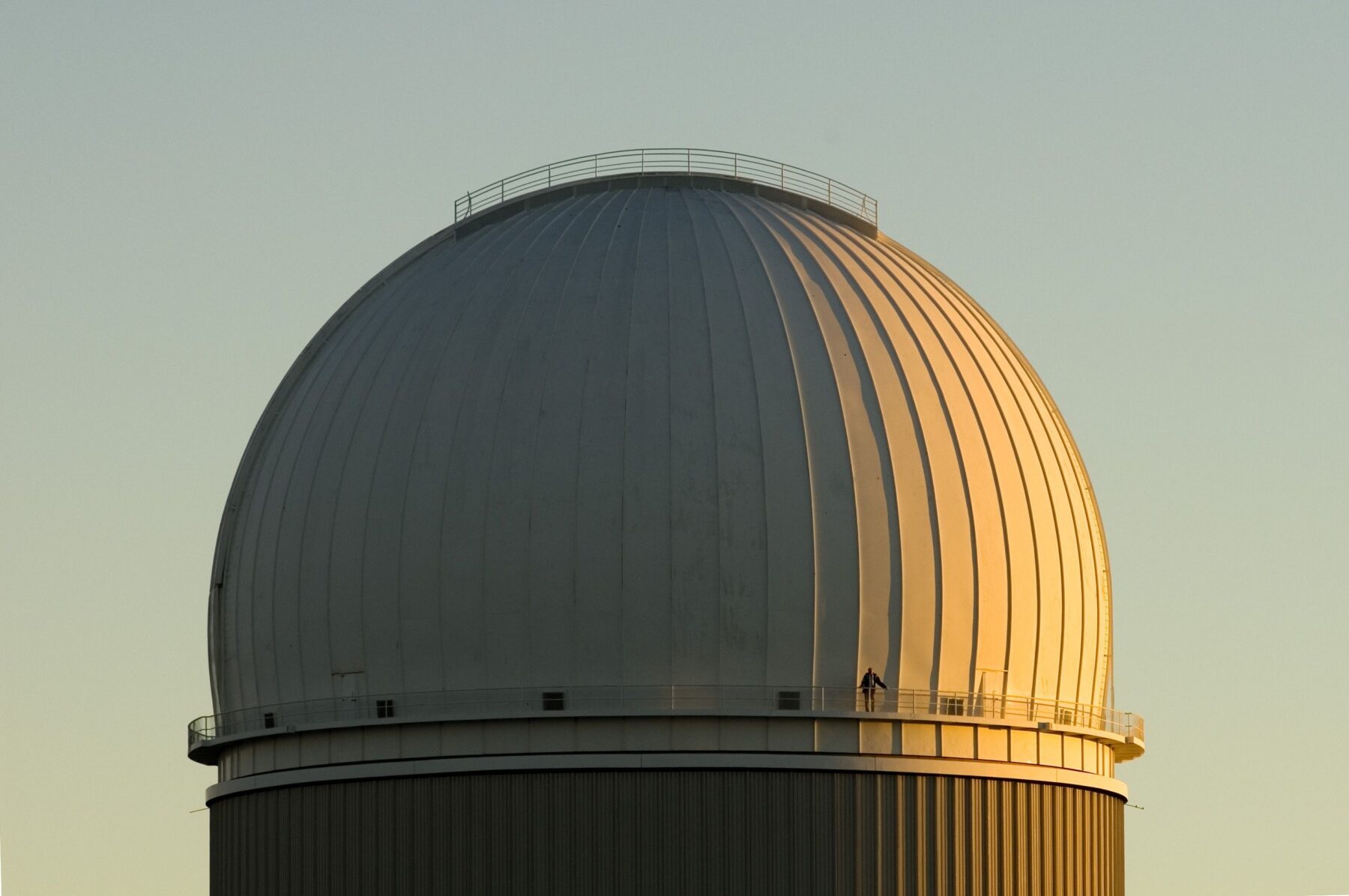
Leading the way
What can be gained from this technique are the vital statistics of target stars or galaxies, hundreds at a time, in large-scale “population census”-type studies. The AAO led the way with its robotic 2dF (two-degree field) instrument, the first task of which was making a three-dimensional map of the distribution of galaxies within 2.5 billion light-years to provide a detailed cross-section of the universe.
The project measured 221,000 galaxies and was completed in 2002, quickly becoming one of the richest sources of AAO scientific papers to date. In 2005 it was used to find the “missing link” between the temperature fluctuations in the Cosmic Microwave Background Radiation – the “flash” of the Big Bang – and today’s distribution of galaxies. That remains a hot topic.
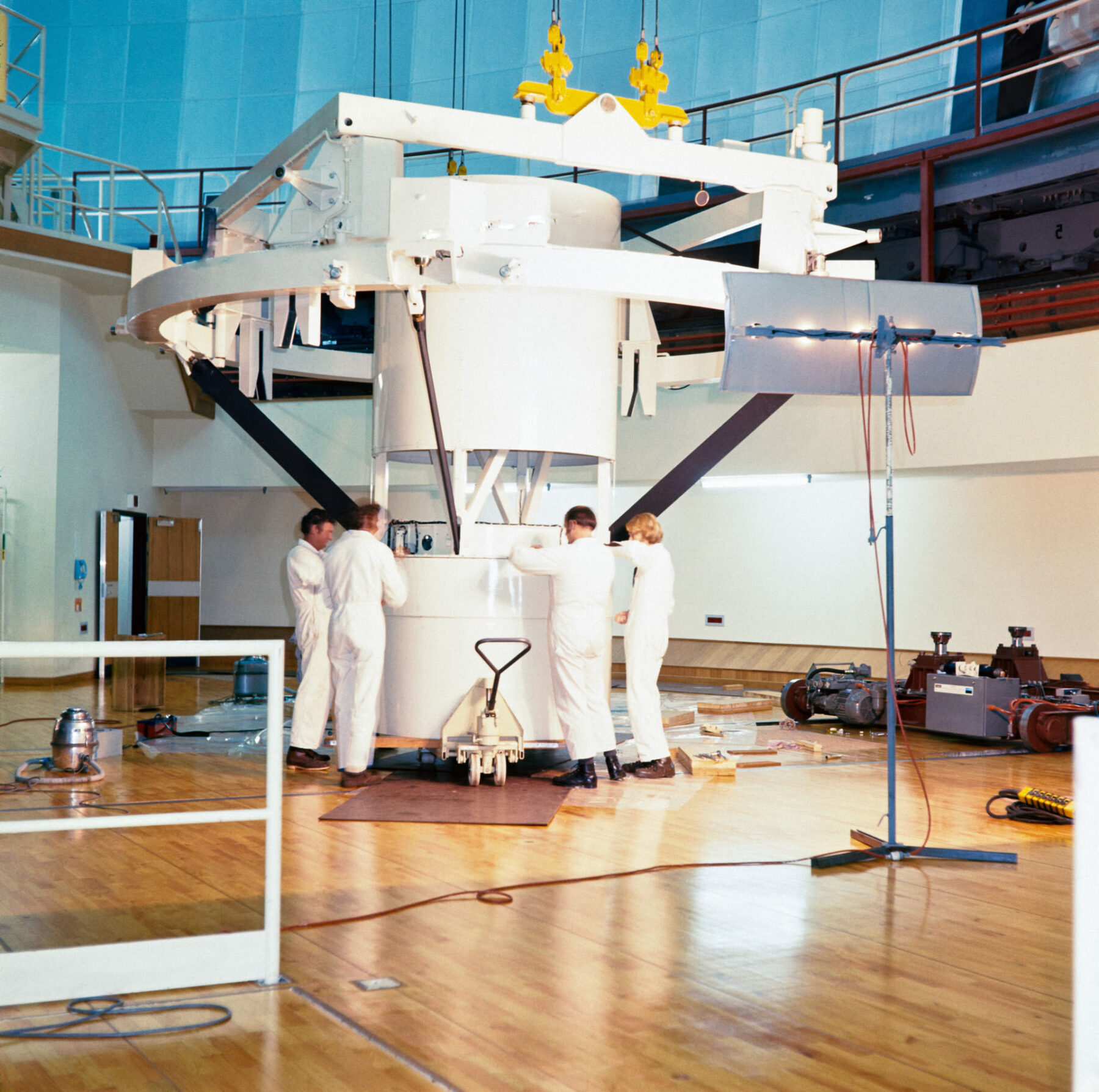
Building on this achievement, the AAO created a succession of room-sized instruments to be fed remotely by 2dF fibres, culminating in 2014 with HERMES, a high-definition spectrograph that was especially designed to investigate the history of our galaxy using detailed observations of large numbers of individual stars. This has already netted the spectra of almost 1 million stars. Another line of development eventually resulted in the commissioning in 2022 of Hector, a Sydney University–AAO instrument that positions multiple bundles of fibres for the detailed study of nearby galaxies.
Alongside its multi-object work, the AAO has a rich history of building and deploying one-object-at-a-time instruments that have produced spectacular results, ranging from the first infrared observations of the surface of Venus to the discovery of dozens of planets orbiting nearby stars.
It’s fair to say that there is no area of astronomy that hasn’t been touched by observations made with the AAT, including findings that have broken successive records for the most distant, largest, faintest and, occasionally, smallest objects. Besides its staff, the AAO’s instrumentation program and the efficiency with which its telescopes are operated, there has been one other major ingredient to the facility’s success – its environment. While Siding Spring can’t compare for atmospheric stability with the high mountain sites of northern Chile, it does offer a night sky as dark today as it was when its first inhabitants looked skywards tens of thousands of years ago. And that’s thanks – in part, at least – to the efforts of the Siding Spring Dark Sky Committee.
In parallel with its legislative work, the committee also spearheaded a proposal to have the adjacent Warrumbungle National Park recognised internationally in 2016 as Australia’s first Dark Sky Park. That success led to a major Siding Spring conference on light pollution and the foundation of a not-for-profit advocacy body – the Australasian Dark Sky Alliance.
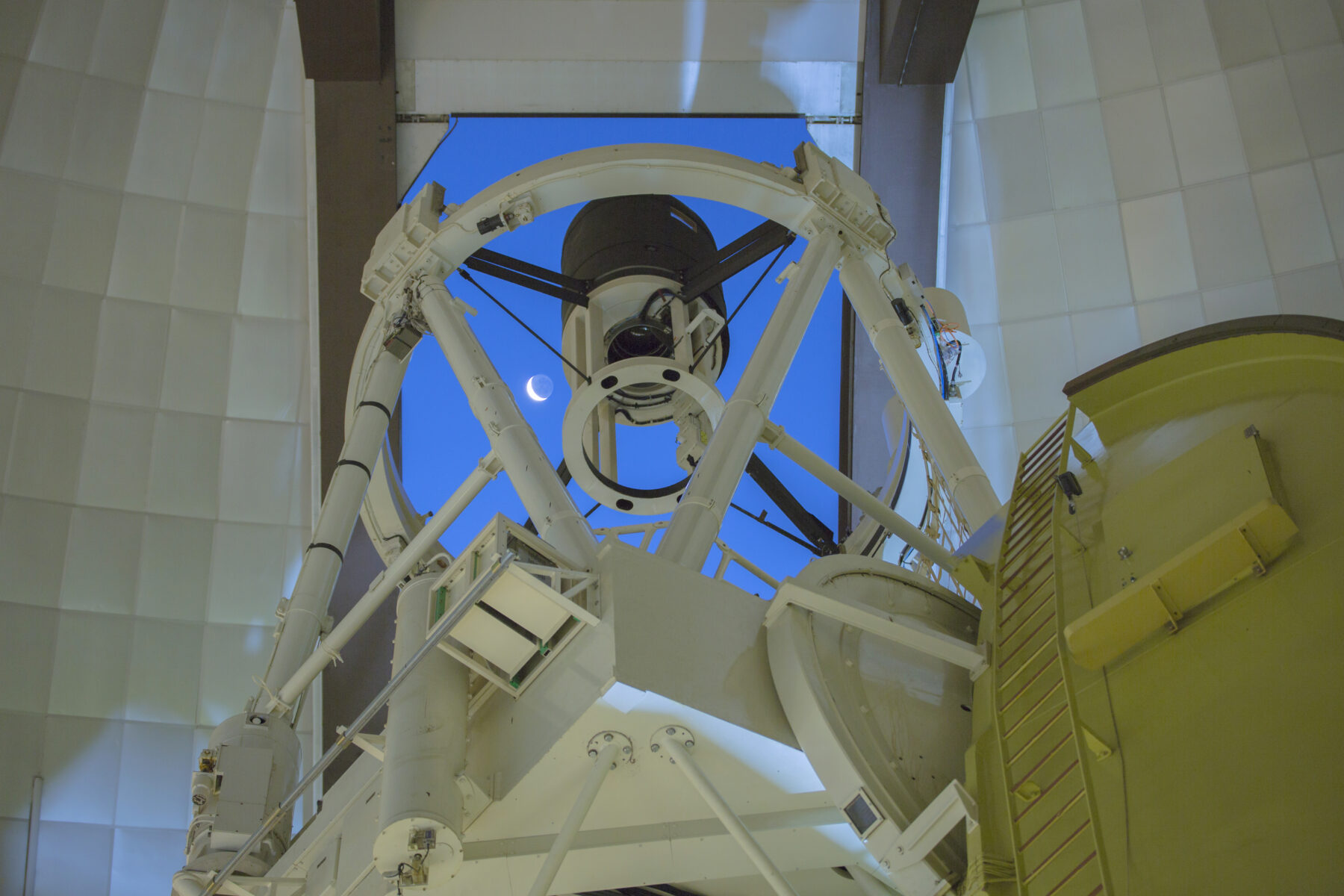
A new era
It was David Malin who remarked a few years ago that the establishment of the AAO heralded a golden age of astronomy, and he was right. But astronomy is a dynamic science, and its advancement worldwide bring changes that reflect the requirements of future generations of scientists. For the AAO, the first major administrative change took place when British involvement came to an end. On 1 July 2010 the former Anglo-Australian Observatory became the Australian Astronomical Observatory, a division of the Commonwealth Government.
Not many years down the track, the AAT was again in the news as the chief survivor of a destructive bushfire, the Wambelong fire of 13 January 2013, which destroyed 55,200ha of national park and privately owned bushland in the vicinity of Siding Spring. It was only thanks to aerial water bombing and the crews of Fire and Rescue NSW that none of the telescopes were damaged.
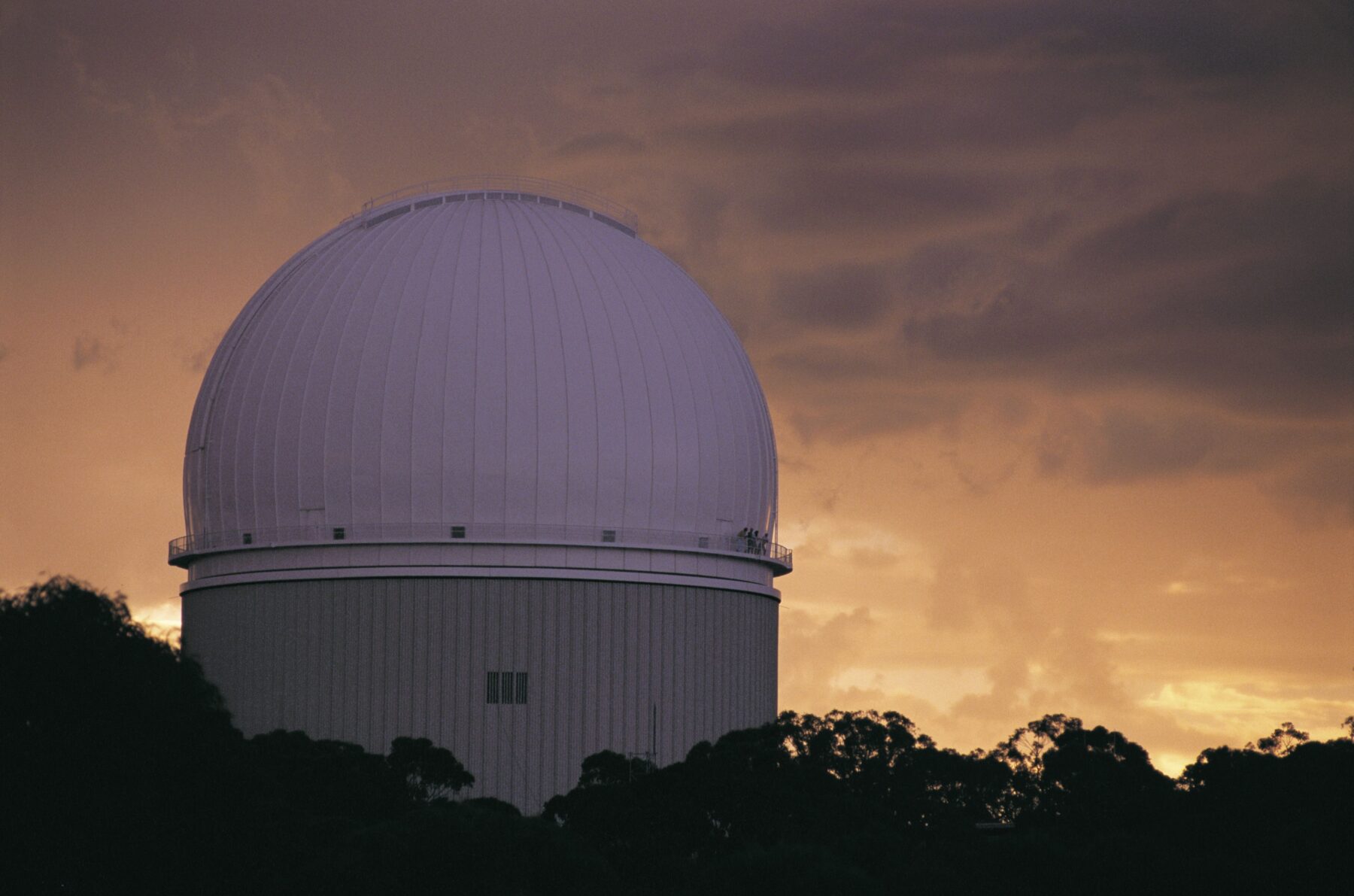
Today, we have a new era in Australian astronomy. At a time when optical telescopes in the 8–10m class are the workhorse instruments, Australian astronomers have sought links with organisations operating such facilities on sites with better atmospheric stability than anywhere in Australia – an essential ingredient for major new infrastructure investment.
A 10-year strategic partnership between the Australian Government and the European Southern Observatory (ESO) was signed in 2017 and gives Australian access to the four 8.2m- diameter components of the ESO’s Very Large Telescope in northern Chile. The ESO is one of three organisations worldwide seeking to develop facilities in the so-called extremely large telescope, or ELT, category – telescopes with mirrors more than 20m in diameter. With an aperture of 39.3m, the European ELT will be the largest of them when it comes into operation in Chile in the late 2020s, and today’s astronomers can only imagine the discoveries that might come from it.
Back in Australia, a second major change in the AAT’s operation took place on 1 July 2018, when it transitioned from the Commonwealth Government to the university sector, funded by a consortium of Australian universities with the Australian National University responsible for running the telescope. As it celebrates its 50th anniversary in October, the AAT continues to deliver world-class science with 2dF, HERMES, Hector and a planet-seeking instrument named Veloce under the directorship of Christopher Lidman. For those of us who have been involved with the AAT since its earliest days, it is a source of enormous pride. And for an upcoming generation of Australian astronomers, it provides a superb training tool as they look to bigger facilities elsewhere for the major discoveries they will make.
Fred Watson is Australian Geographic’s space expert. Read his regular space column in each issue of the Australian Geographic magazine.

